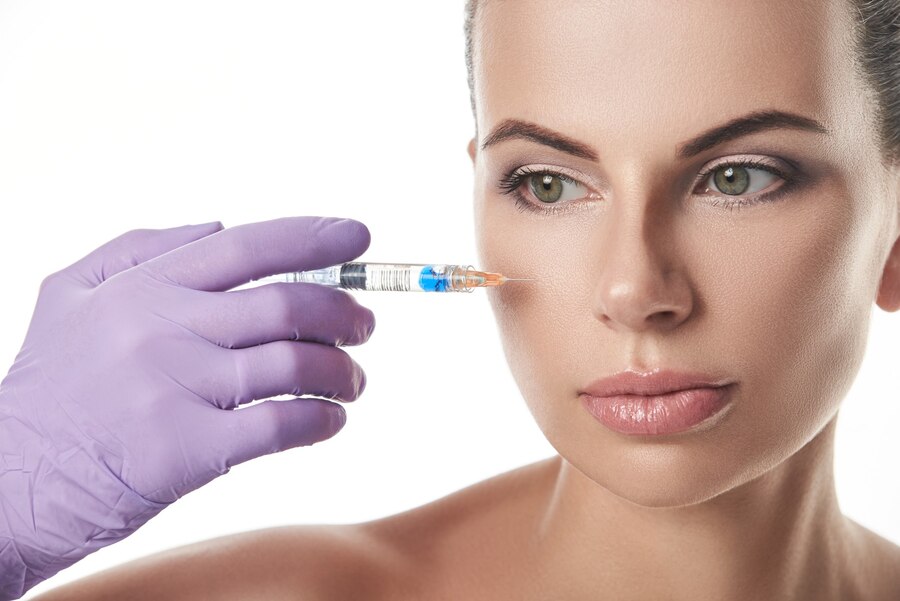Botox: Beyond Beauty

In the realm of cosmetic procedures, few have garnered as much attention and controversy as Botox. Often associated solely with its wrinkle-reducing capabilities, Botox’s impact extends far beyond superficial beauty concerns. Its journey from medical marvel to mainstream cosmetic treatment marks a fascinating intersection of science, medicine, and societal perceptions of aging.
Beyond its cosmetic applications, Botox has found surprising efficacy in treating various medical conditions, from migraines to excessive sweating and even neurological disorders. Delving deeper into its mechanisms reveals a complex interplay between botulinum toxin and nerve signals, offering insights into the intricacies of human physiology.
However, with its widespread adoption, questions arise regarding its long-term effects and ethical considerations. Exploring Botox beyond its beauty-enhancing facade unravels a narrative rich in scientific discovery, cultural norms, and ethical dilemmas, inviting us to reconsider our perceptions of aging, beauty, and the role of medical interventions in our lives.
The Evolution of Botox: From Medical Marvel to Cosmetic Craze
Originally developed for medical use, Botox, derived from the bacterium Clostridium botulinum, has transformed significantly. Initially lauded for its efficacy in treating various medical conditions such as muscle spasms, chronic migraines, and overactive bladder, Botox gradually entered the cosmetic realm.
Its ability to temporarily paralyze muscles and diminish wrinkles propelled it into the beauty industry, becoming a multibillion-dollar market. However, this transition sparked debates on ageism and beauty standards. Despite controversy, Botox’s evolution underscores the intricate interplay between medical innovation, societal norms, and individual preferences, shaping its narrative in the modern era.
Beyond Wrinkles: Surprising Medical Applications of Botox
While known for its wrinkle-smoothing effects, Botox’s medical applications are extensive. Its ability to block nerve signals benefits conditions like migraines, muscle spasms, and excessive sweating. From chronic pain relief to bladder control, Botox’s versatility has spurred ongoing research. As scientists delve deeper, Botox’s role in medicine expands, offering hope globally.
Unveiling the Science: How Botox Works on a Molecular Level
Understanding how Botox works on a molecular level provides insights into its effects and applications. Botox inhibits acetylcholine release, temporarily paralyzing muscles. Here are five key insights:
- Inhibition of acetylcholine release: Botox blocks the release of acetylcholine, disrupting the signals that trigger muscle contractions.
- Binding to nerve receptors: The botulinum toxin binds to specific receptors on nerve endings, preventing the release of acetylcholine.
- Temporarily paralyzing muscles: By interrupting the nerve signals, Botox induces temporary muscle paralysis, reducing wrinkles and alleviating muscle spasms.
- Regeneration of nerve endings: The body regenerates new nerve endings over time, gradually restoring muscle function and reversing the effects of Botox.
- Precision targeting: Botox can be precisely targeted to specific muscle groups or nerve pathways, allowing for tailored treatment and minimal side effects.
Understanding Botox’s molecular mechanisms illuminates its multifaceted role in health and aesthetics.
Botox and Neurological Disorders: A Promising Frontier in Treatment
Beyond its well-known cosmetic applications, Botox holds promise as a therapeutic intervention for various neurological disorders. Conditions such as cervical dystonia, a neurological movement disorder characterized by involuntary muscle contractions in the neck and shoulders, have seen significant improvements with Botox injections.
By targeting specific muscle groups, Botox can help alleviate the pain and discomfort associated with these disorders, improving patients’ quality of life. Additionally, Botox has shown efficacy in treating chronic migraines, providing relief for individuals who suffer from debilitating headache episodes.
As research continues to uncover the potential benefits of Botox in neurological care, it offers new hope for patients facing these challenging conditions, highlighting its versatility beyond its cosmetic allure.
Debunking Myths: Separating Fact from Fiction about Botox
Despite its widespread popularity, Botox remains shrouded in myths and misconceptions, often fueled by sensationalized media portrayals and hearsay. Separating fact from fiction is crucial in understanding the true nature of this treatment and its potential implications.
One common myth surrounding Botox is the belief that it freezes facial expressions entirely, resulting in a “plastic” or unnatural appearance. In reality, when administered correctly by a qualified medical professional, Botox merely relaxes muscles, allowing for natural facial movements while minimizing the appearance of wrinkles. Another misconception is that Botox is only suitable for older individuals seeking to reverse signs of aging.
In truth, Botox can be utilized preventatively in younger individuals to delay the onset of wrinkles. By dispelling these myths and fostering informed discussions, we can foster a more nuanced understanding of Botox and its role in cosmetic enhancement.
Ethical Considerations: The Dilemma of Using Botox for Cosmetic Enhancement
Ethical considerations surrounding the use of Botox for cosmetic enhancement present a complex dilemma, balancing individual autonomy with societal influences and healthcare practices. Navigating these complexities requires careful consideration of ethical principles such as beneficence, nonmaleficence, autonomy, and justice to ensure responsible and ethical use.
- Personal Autonomy: Individuals have the right to make informed decisions about their bodies and appearance.
- Unrealistic Beauty Standards: Societal pressures may influence choices regarding cosmetic procedures.
- Accessibility and Equity: Disparities in access to Botox treatments raise concerns about fairness.
- Medicalization of Appearance: The normalization of cosmetic procedures raises questions about beauty and medicine.
- Ethical Practices: Upholding principles like beneficence, nonmaleficence, autonomy, and justice is essential.
Navigating the ethical considerations of using Botox for cosmetic enhancement requires a nuanced approach that balances individual autonomy, societal influences, and ethical principles. By fostering open dialogue, promoting informed decision-making, and upholding ethical standards, we can strive towards a more conscientious and equitable approach to cosmetic interventions.
Botox and Mental Health: Exploring the Psychological Impact of Cosmetic Procedures
The psychological impact of Botox and other cosmetic procedures extends beyond physical appearance, influencing individuals’ self-esteem, body image, and mental well-being. Research suggests that cosmetic interventions such as Botox injections can have positive effects on individuals’ self-perception and confidence levels. By addressing perceived flaws or insecurities, Botox may alleviate psychological distress and improve overall quality of life for some individuals.
However, concerns have been raised regarding the potential psychological risks associated with cosmetic procedures, including body dysmorphia and excessive preoccupation with appearance. Additionally, societal pressures to conform to unrealistic beauty standards can contribute to feelings of inadequacy and dissatisfaction, highlighting the complex interplay between cosmetic interventions and mental health.
As we continue to explore the psychological impact of Botox and other cosmetic procedures, it is essential to consider the holistic well-being of individuals and promote body positivity and self-acceptance.
The Rise of “Preventative Botox”: Shifting Perspectives on Aging and Beauty
The concept of “preventative Botox” has gained traction in recent years, reflecting a shift in societal attitudes towards aging and beauty. Traditionally, Botox was primarily associated with reversing signs of aging once they had already appeared. However, an increasing number of younger individuals are now turning to Botox as a proactive measure to delay the onset of wrinkles and preserve a youthful appearance.
This trend underscores changing perceptions of aging, with many embracing a preventive approach to skincare and cosmetic enhancement. While some applaud the empowerment and agency it affords individuals in managing their appearance, others express concerns about the normalization of cosmetic procedures and the pressure to conform to unrealistic beauty standards.
As the popularity of preventative Botox continues to rise, it prompts critical discussions about societal norms, individual autonomy, and the commodification of youth and beauty.
Beyond Vanity: Botox’s Potential to Improve Quality of Life for Patients
Botox, often associated with cosmetic enhancement, extends its impact far beyond mere vanity, offering significant benefits for patients’ overall well-being.
- Pain Relief: Botox injections have shown efficacy in alleviating chronic migraines and muscle spasms, providing much-needed relief from debilitating symptoms.
- Improved Mobility: For individuals suffering from conditions like cervical dystonia, Botox can help reduce muscle stiffness and involuntary contractions, enhancing mobility and daily functioning.
- Enhanced Confidence: By addressing physical discomfort and symptoms, Botox treatments can boost self-esteem and confidence levels, improving patients’ mental well-being.
- Reduced Emotional Distress: Many patients experience decreased anxiety, depression, and emotional distress following successful Botox treatment, enhancing their quality of life.
- Holistic Wellness: Recognizing Botox’s therapeutic potential beyond cosmetic enhancement highlights the importance of prioritizing patients’ holistic health and well-being.
Botox’s ability to improve quality of life for patients extends beyond surface-level beauty concerns, emphasizing the transformative impact it can have on physical comfort, mental health, and overall well-being.
The Future of Botox: Innovations, Challenges, and Emerging Trends
As scientific research and technological advancements continue to evolve, the future of Botox holds exciting possibilities and challenges. Innovations in formulation, delivery methods, and targeted applications are expanding the scope of Botox’s medical and cosmetic uses, promising enhanced efficacy and patient outcomes.
Additionally, ongoing research into alternative neurotoxins and novel treatment modalities may offer new avenues for therapeutic intervention in various medical conditions. However, the growing demand for Botox also poses challenges, including ensuring safety, accessibility, and ethical use.
Addressing these challenges requires collaboration between researchers, healthcare professionals, regulatory agencies, and industry stakeholders to uphold rigorous standards of practice and prioritize patient safety. By embracing innovation while remaining vigilant to potential risks, we can navigate the future of Botox with cautious optimism, striving to maximize its benefits while minimizing harm.
Botox has transcended its origins as a medical treatment to become a cornerstone of both cosmetic enhancement and therapeutic intervention. Its evolution from a medical marvel to a cosmetic craze underscores the complex interplay between science, societal norms, and personal preferences.
Beyond its well-known ability to smooth wrinkles, Botox boasts surprising medical applications, offering relief for conditions ranging from chronic migraines to neurological disorders. However, as its popularity grows, it is essential to debunk myths, address ethical considerations, and recognize its potential impact on mental health. Looking ahead, the future of Botox holds exciting possibilities and challenges, requiring a collaborative effort to ensure safety, accessibility, and ethical use.
At American Laser Med Spa, we’re committed to helping you look and feel your best with our range of treatments, because looking good feels great. Contact us today to start your journey towards enhanced confidence and well-being!







